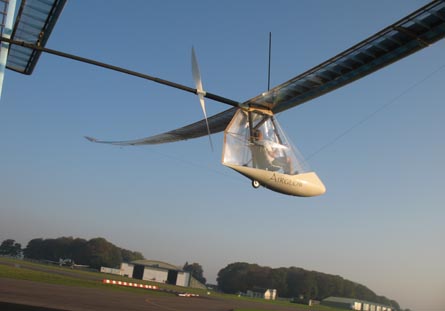Experience with low-powered aircraft aerodynamics gained during the 1970s and 1980s - by engineering teams in the USA, Europe and Japan bidding to win Royal Aeronautical Society (RAeS) prizes for human-powered aircraft (HPA) - is widely credited with paving the way for high-altitude, long-endurance unmanned systems.
But today a renewed interest in pedal-powered machines could shed light on a high-profile aerodynamic challenge - airliner winglets.
Bill Brooks, head of the RAeS's human power group, along with a team of colleagues have restored a UK-built, human-powered 1988 aircraft - Airglow - for flights at Kemble airfield in Gloucestershire.
 |
|---|
Airglow human-powered aircraft |
The machine originally featured control by rotatable wingtips, but after years of storage in a field near Cambridge, the bearings were frozen.
Brooks said the bearings are now fixed - but remain adjustable between flights. In-flight control is by rudder and elevator, with an increased dihedral for stability. The configuration flies well, Brooks added, and reduces spiral divergence in turns - a problem which has made turning an extremely difficult problem for HPAs.
Now, the team hopes to exploit Airglow's wingtip construction to identify drag-reducing adjustments and experiment with a range of tip shapes.
HPAs, Brooks added, need 25m (82ft)-plus wingspans to keep induced drag low enough for flight, but such spans are relatively impractical and sap huge power in turns. As a result, drag reduction may allow for shorter wingspans.
Source: Flight International























